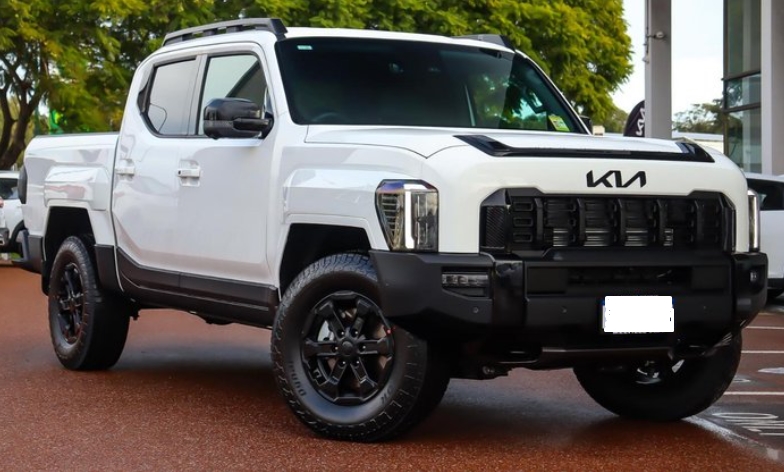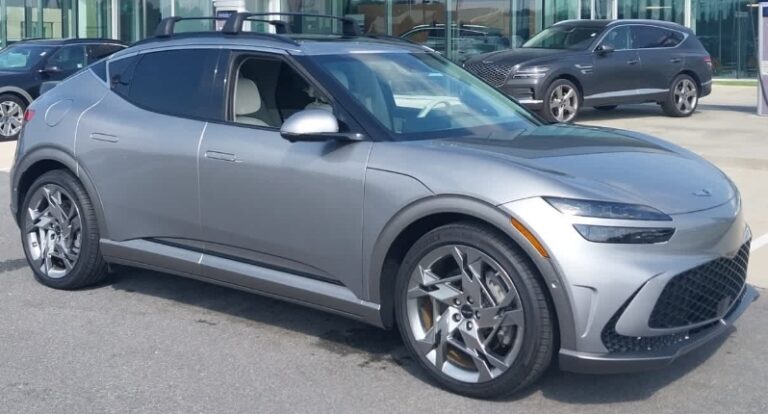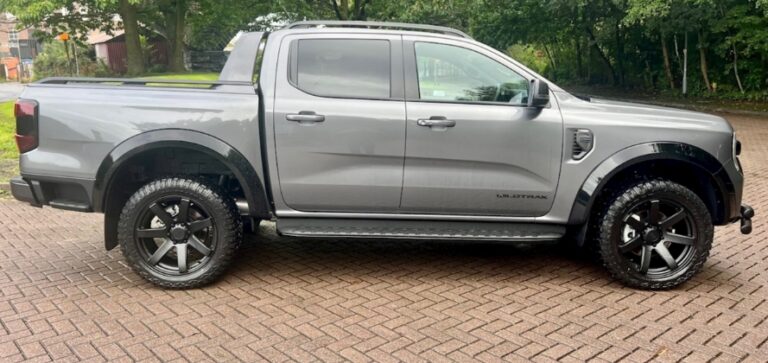The Genesis of a New Predator: Charting the Evolution of the Kia Tasman
In the fiercely competitive landscape of the global automotive industry, few segments are as challenging to penetrate as the mid-size pickup truck market. Dominated for decades by titans like the Toyota Hilux, Ford Ranger, and Isuzu D-Max, it’s a realm where brand loyalty is forged through generations of proven toughness and reliability. Yet, it is precisely this challenge that Kia, the ambitious South Korean automaker, has chosen to confront with its first-ever true utility vehicle: the Kia Tasman.
Unlike a vehicle with a long and storied history, the Kia Tasman is an entirely new entrant. As of late 2024, it has zero production years, has not been officially released for sale, and its final model and trim structure remains under wraps.
Therefore, the “evolution” of the Tasman is not one of generational updates and facelifts, but a fascinating story of strategic development, from a long-held corporate ambition and secretive project to a near-production reality poised to shake up the established order. This is the evolution of its creation.
The Pre-Evolution: A Long-Simmering Ambition (Pre-2019)
The idea of a Kia pickup was not born overnight. For years, whispers and conceptual dalliances hinted at the brand’s interest. The most significant early sign came in 2004 with the KCV-4 Mojave Concept. Unveiled at the Chicago Auto Show, the Mojave was a unibody “Sport Utility Truck” based on the Sorento SUV platform. It featured innovative elements like a powered, extending cargo bed and rear-hinged suicide doors. While it garnered attention, the market wasn’t yet clamoring for lifestyle-oriented unibody trucks (a niche Hyundai would later successfully tap with the Santa Cruz), and the project never moved beyond the concept stage.
For the next decade and a half, Kia focused on its core strengths: building a reputation for style, quality, and value in the sedan, hatchback, and increasingly, the SUV markets. The pickup truck dream was shelved but never entirely forgotten. Internally, executives, particularly in markets like Australia where “utes” are a cultural and commercial institution, continued to advocate for a vehicle that could compete. They watched as rivals raked in massive profits from body-on-frame trucks, a segment Kia had no answer for.
The Spark: Project “TK” Gets the Green Light (2019-2022)
The modern story of the Tasman truly began around 2019. Recognizing the immense potential and responding to a chorus of pleas from its global subsidiaries, Hyundai Motor Group (HMG), Kia’s parent company, officially sanctioned the development of a proper, ladder-frame chassis mid-size pickup.
The project was codenamed “TK.” This internal designation marked a significant shift from the conceptual Mojave. This would not be a soft, car-based crossover with a bed. HMG’s directive was clear: build a genuine workhorse. It needed to be rugged, capable, and credible enough to be cross-shopped with the segment’s best. The primary development and benchmark market was identified early on: Australia. The continent’s harsh conditions, demanding consumers, and ute-dominated sales charts made it the perfect crucible for forging the TK.
Development proceeded under a thick veil of secrecy. Engineers were tasked with creating a new body-on-frame platform designed for durability, payload capacity, and towing prowess. This was a monumental undertaking for a brand whose expertise lay in monocoque construction.
By 2022, the project broke into the public consciousness. Damien Meredith, Chief Operating Officer of Kia Australia, began making bold public statements, confirming that a “ute” was not just a wish but was actively in development. He confidently projected that it could capture around 10% of the Australian market, an audacious goal that would translate to over 20,000 sales annually. These statements transformed the Tasman from a speculative rumor into an impending reality.
The Development Phase: Camouflage and Spy Shots (2022-2024)
With the cat out of the bag, the hunt for prototypes began. Soon, heavily camouflaged test mules started appearing around the world, from frozen lakes in Scandinavia to the punishing heat of the Australian outback and the demanding corners of Germany’s Nürburgring.
Automotive journalists and spy photographers dissected every image, gleaning crucial details:
Construction: The high ground clearance, separate cab and bed, and visible chassis rails confirmed its body-on-frame architecture, decisively separating it from the unibody Hyundai Santa Cruz.
Silhouette: The spy shots revealed a distinctly boxy, muscular, and upright design. The front end appeared bold and wide, seemingly inspired by larger American trucks and Kia’s own Telluride SUV. Unlike the flowing, aerodynamic lines of its passenger cars, the Tasman’s form clearly prioritized function and presence.
Powertrain Clues: The distinct clatter heard in spy videos and the visible diesel particulate filters on test vehicles pointed overwhelmingly to a diesel engine. The consensus quickly formed around HMG’s venerable 2.2-liter CRDi four-cylinder turbo-diesel, an engine well-regarded for its torque and efficiency in vehicles like the Kia Sorento and Hyundai Santa Fe. For the Tasman, it would likely be retuned for commercial application, prioritizing low-end grunt for towing and hauling.
Throughout this period, Kia Australia remained the project’s most public champion, actively involved in local testing and tuning to ensure the suspension, powertrain, and overall dynamics were suited to local conditions.
The Christening: A Name is Chosen (2024)
On April 11, 2024, Kia officially ended speculation by announcing the vehicle’s name: Tasman.
The name is a masterstroke of regional marketing. Named after the Tasman Sea that separates Australia and New Zealand, and the Dutch explorer Abel Tasman who first sighted the lands, it directly honors its primary target market. It evokes a sense of ruggedness, adventure, and exploration.
The name’s reveal was accompanied by a clever marketing campaign in Australia featuring a cast of national sporting legends from cricket, rugby, and soccer, all debating what the new ute should be called. The campaign built enormous local hype and cemented the vehicle’s identity before a single production model had been seen.
The Unveiling and Anticipated Structure: What We Expect for 2025
While the full, uncamouflaged debut is slated for late 2024 with a market launch in 2025, the composite picture of its model lineup is becoming clearer based on industry standards, Kia’s existing trim hierarchy, and strategic leaks. The Kia Tasman is expected to launch with a range of models designed to compete at every level of the market.
Expected Body Styles:
Dual-Cab: This will be the priority at launch, catering to the booming “lifestyle” and family-use segment.
Single-Cab / Cab-Chassis: Expected to follow the initial launch, these variants will be crucial for capturing the fleet and trade-worker markets.
Expected Powertrain:
Primary Engine: A 2.2-liter four-cylinder turbo-diesel, likely producing around 148 kW (200 hp) and a robust 440-450 Nm of torque. This will be paired with an eight-speed automatic transmission.
Drivetrain: Both 4×2 (rear-wheel drive) and part-time 4×4 configurations will be offered.
Future Powertrains: A V6 engine (potentially HMG’s 3.5-liter petrol or 3.0-liter diesel) is rumored for select markets, and an all-electric version is confirmed to be in development for a later release, future-proofing the Tasman platform.
Anticipated Trim Levels (Based on Kia’s Global Strategy):
While official names are yet to be confirmed, the lineup will almost certainly mirror Kia’s successful “good, better, best” strategy:
Work/Base Model (e.g., EX): The entry point, aimed at commercial and fleet buyers. It will likely feature rugged steel wheels, a durable vinyl or cloth interior, a basic infotainment system, and a focus on practicality with a high payload capacity.
Mid-Range Model (e.g., Sport or S): The volume seller. This trim will add popular features like alloy wheels, a larger touchscreen with Apple CarPlay/Android Auto, more advanced safety features, and chrome or body-colored exterior accents.
High-End Model (e.g., GT-Line): The flagship lifestyle model designed to compete with the Ford Ranger Wildtrak and Toyota Hilux SR5. This will feature all the bells and whistles: larger, stylish alloy wheels, a full suite of Kia’s “Drive Wise” advanced safety systems, leather-appointed interior, premium sound system, LED lighting, and unique GT-Line styling elements for a sportier, more premium appearance.
Halo Off-Road Model (Potential “X-Pro” or similar): Looking at market trends, it is highly probable that Kia is developing a dedicated, hardcore off-road variant to challenge the Ford Ranger Raptor. This future model would likely feature a unique suspension with increased travel and ride height, all-terrain tires, wider fender flares, underbody protection, and potentially a more powerful engine option.
.
RepairSurge Online Repair Manuals Replace Bulky Books With Reliable Digital Information!
Faster And Cheaper Than Traditional Printed Manuals, Users Get Instant Access To The Repair Information They Need For Any Car, Truck, Van or SUV:
.
The Future: A Global Contender
The evolution of the Kia Tasman is the story of a calculated assault on one of the automotive world’s last unconquered frontiers for the brand. It represents a multi-billion dollar investment and a decade of ambition realized. Starting in 2025, its journey will shift from development to deployment, launching first in key markets like Australia, Korea, South Africa, and the Middle East.
The question of North America remains the most intriguing. The infamous “Chicken Tax,” a 25% tariff on imported light trucks, makes bringing the Korean-built Tasman to the U.S. financially challenging. However, given the colossal size of the American truck market, HMG is almost certainly exploring solutions, including potential production in North America in the long term.
The Tasman’s evolution is not yet complete; in fact, it has just begun. Its true test will come not in spy shots or press releases, but on rugged worksites, remote trails, and suburban highways. It has evolved from an idea into a tangible, muscular machine, ready to prove that a predator from a new land can indeed hunt with the segment’s established giants.







